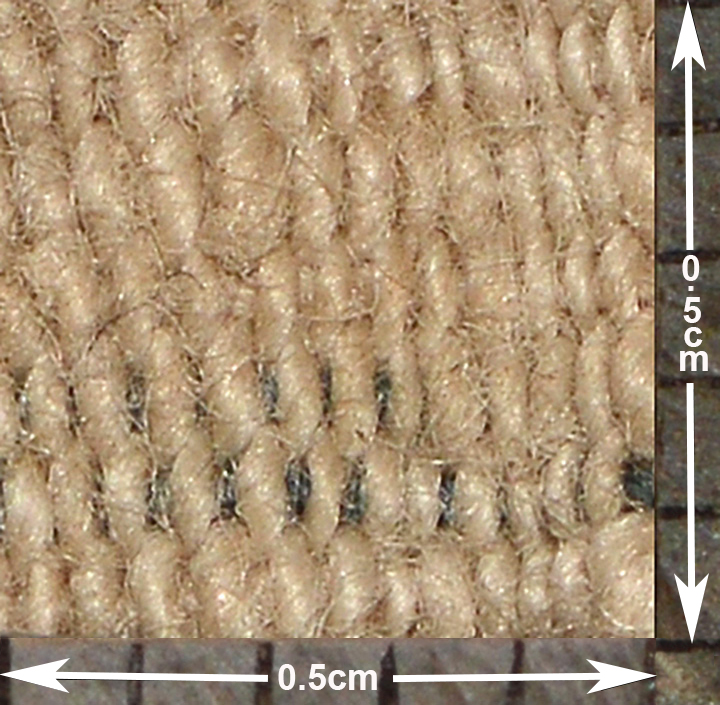CIRCA: 1900
A ceremonial hand-towel or lap cover (Chaksi Pankhep) originally used only by the nobility in Bhutan. (Literally translated chaksi means ‘hand wash’ and pankhep means ‘lap cover’ in the Bhutanese language.) It is comprised of three individual hand woven wild silk panels that are then hand stitched together to make up the finished piece. The central horizontally designed panel is the widest, with a narrower vertical panel on either side of it, each being approximately half the size of the central panel. It is made of extremely fine hand woven wild silk, i.e. the lower center image above shows an area just 0.5cm x 0.5cm (2/10ths of an inch!) square. The design consists of of both hand-spun wild silk and hand-spun cotton and consist of four colours; primarily red and black, with orange and green in several of the horizontal central designs. [For similar published examples see page 134, in the book From The Land Of The Thunder Dragon by Diana K Myers and Susan S Bean (editors)]





